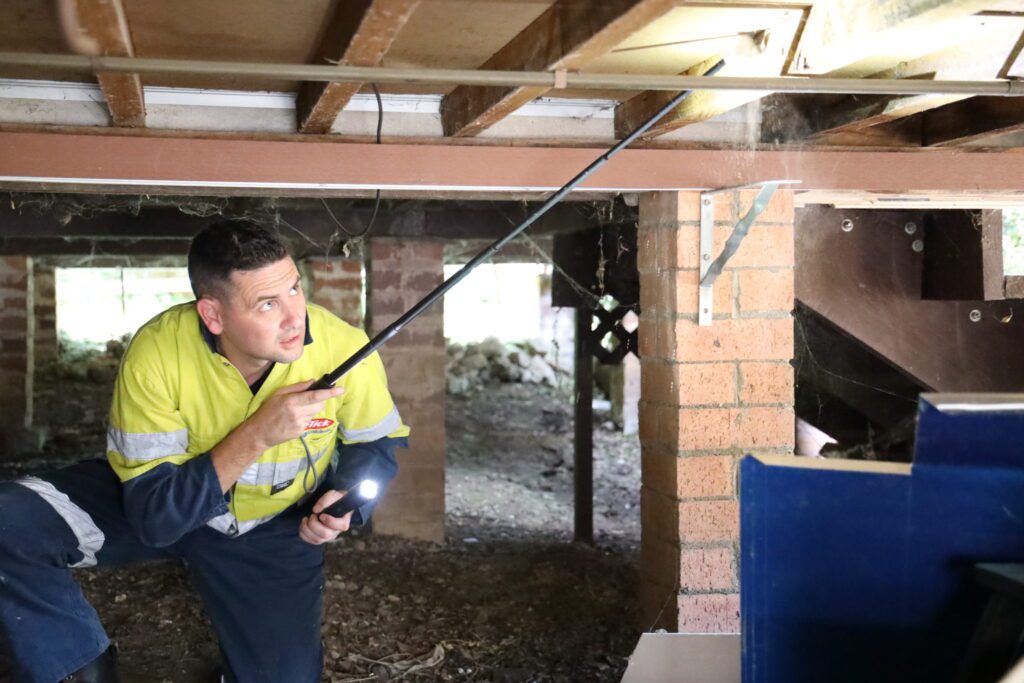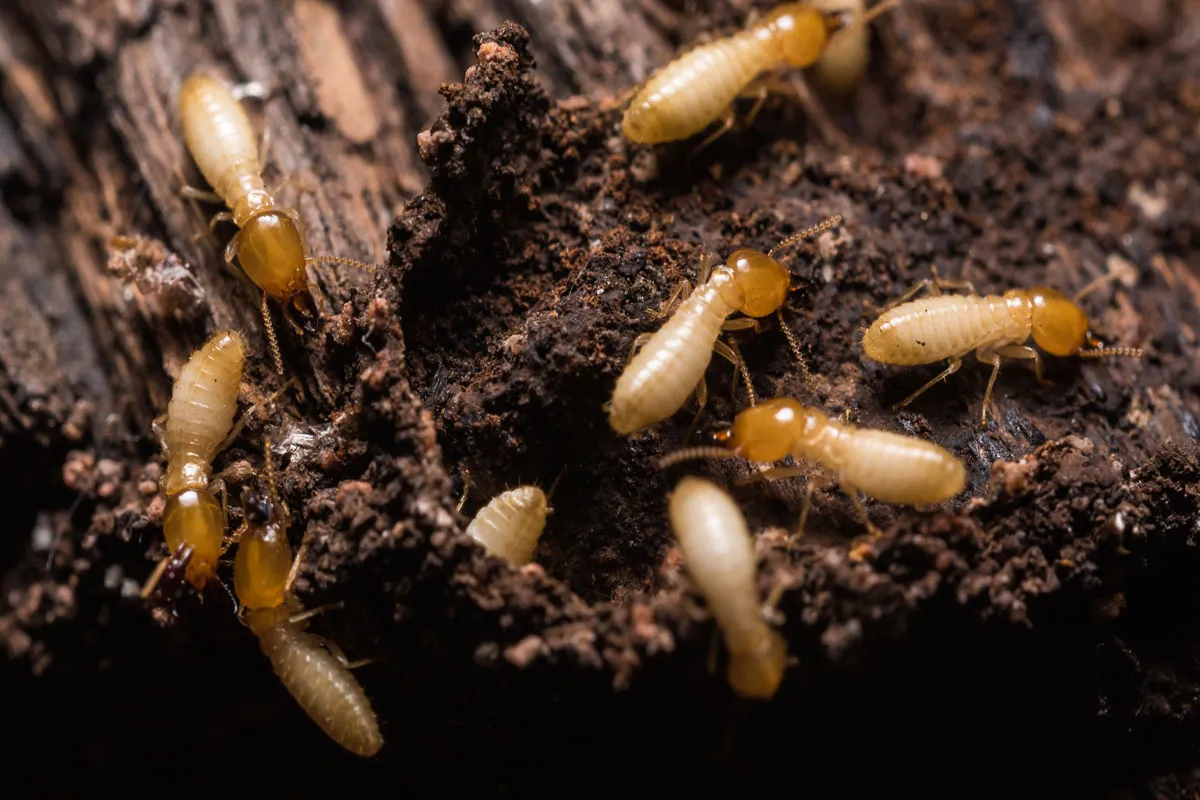Termite barrier systems are essential for protecting Sydney properties from destructive termite invasions. These advanced methods of protection create impenetrable barriers around buildings, stopping termites from getting to the vulnerable wooden parts of the structure.
Why are Termite Barriers Important?
Sydney’s climate and environmental conditions make properties especially prone to termite activity. Studies show that 1 in 4 Australian homes has problems with termites, and the damage costs can reach hundreds of thousands of dollars without proper termite pest control sydney.
How Do Termite Barriers Work?
Termite barriers operate through two main ways:
- Physical barriers – Using specialised materials to create obstacles that termites cannot pass through
- Chemical barriers – Creating treated areas that kill or repel termites
These systems need professional installation and can be easily integrated into both new buildings and existing properties. The barriers continuously work to protect buildings from subterranean termite entry points, giving property owners peace of mind and long-lasting protection for their structures.
A properly installed termite barrier system is an important investment in protecting your property. It greatly lowers the risk of expensive termite damage and keeps the building’s structure intact.
Understanding Termite Barrier Systems
Termite barrier systems create protective zones around properties through strategic implementation of physical and chemical deterrents. These sophisticated defence mechanisms work in harmony to establish multiple layers of protection against termite invasions.
Physical Termite Barriers
Physical barriers serve as impenetrable shields between termites and building structures. These barriers consist of specialised materials designed to block termite entry points while maintaining structural integrity.

Common Types of Physical Barriers:
- Kordon – A multi-layered termite protection sheet embedded with deltamethrin
- Granitegard – Stainless steel mesh barriers installed during construction
- TermiMesh – Marine-grade stainless steel mesh system
Installation Process:
- Pre-construction Phase
- Site assessment and barrier planning
- Ground preparation and levelling
- Installation of moisture barriers
- Construction Integration
- Placement of physical barriers at critical points
- Sealing of joints and penetrations, including expansion joints
- Integration with concrete slabs and foundations
- Post-construction Verification
- Inspection of barrier continuity
- Testing of seal integrity
- Documentation of installation points
Material Specifications:
Physical barriers utilise high-grade materials engineered for durability:
- Marine-grade stainless steel mesh (0.18mm aperture)
- Chemically impregnated polymer sheets
- Specially treated polyethylene materials
- Flexible barrier systems for complex architectural designs, such as those using PTFE-impregnated spun aramid packing
Effectiveness and Longevity:
Physical termite barriers demonstrate remarkable durability:
- 20+ years of protection with proper installation
- Resistance to environmental degradation
- Zero maintenance requirements
- Continuous protection without chemical reapplication
Critical Installation Points:
- Service penetrations through slabs
- Construction joints
- Retaining walls
- Expansion joints
- Plumbing and electrical entries
These systems create permanent protection zones when installed correctly. The effectiveness relies on precise installation techniques and quality materials. Physical barriers complement other protection methods by establishing foundational defence against termite entry.
The success of physical barrier systems depends on comprehensive coverage and professional installation standards. These systems form part of an integrated approach to termite protection, working alongside chemical treatments and monitoring systems.
2. Chemical Termite Barriers
Chemical termite barriers create a protective zone around properties through the strategic application of specialised termiticides. These treatments establish a continuous chemical barrier in the soil, effectively blocking termite entry points.
Application Methods:
- Trenching: Digging trenches around the building’s perimeter
- Rod Injection: Inserting specialised rods into the soil at regular intervals
- Drilling: Creating holes through concrete or tiles for chemical application
Popular Chemical Solutions:
- Termidor: A non-repellent termiticide that termites cannot detect
- Bifenthrin: A repellent chemical creating a deterrent zone
- Treated Zones: Continuous chemical barriers in soil surrounding structures
Chemical barriers maintain their effectiveness for 5-8 years, depending on soil conditions and environmental factors. The active ingredients work by either:
- Killing termites through direct contact
- Transfer effects where treated termites spread the chemical to others
- Creating repellent zones termites actively avoid
These treatments penetrate deep into the soil, establishing multiple layers of protection. Professional application ensures precise chemical concentration and complete coverage around vulnerable areas. Regular soil testing helps maintain optimal chemical levels for sustained termite protection.
Licensed pest controllers use specific equipment to achieve uniform chemical distribution, preventing gaps in the protective barrier. The treatment depth varies based on soil type, building construction, and local termite species.
For more comprehensive solutions, consider exploring various termite treatment methods. Additionally, integrating termite baiting systems can further enhance your termite control strategy.
3. Reticulation Systems
Reticulation systems are an advanced method of protecting against termites. They consist of a network of pipes that are installed around the perimeter of a property. These pipes work together to create a continuous barrier against termites, with specific delivery points strategically placed for precise distribution of chemicals.
Installation Process
The installation process for reticulation systems involves the following steps:
- Embedding pipes during construction or retrofitting existing structures
- Positioning delivery points at critical termite entry locations
- Installing a main reservoir for chemical replenishment
- Setting up pressure-regulated pumping systems
Advantages of Reticulation Systems
One of the main advantages of reticulation systems is their ability to maintain consistent chemical barriers without causing any disruption to the property’s structure. This means that pest control professionals can easily replenish termiticides through external ports, without the need for drilling or excavation during maintenance.
Non-repellent chemicals like Termidor work exceptionally well with reticulation systems:
- Extended Protection – Creates a lasting barrier that remains active for years
- Silent Elimination – Termites unknowingly transfer the chemical throughout their colony
- Targeted Application – Delivers protection precisely where needed
- Minimal Environmental Impact – Reduces chemical usage through controlled distribution
The integration of monitoring stations within reticulation systems enables early detection of termite activity, allowing for immediate response to potential threats. These stations serve as inspection points to verify the system’s effectiveness and assess chemical concentration levels.
Moreover, the concept of trench warfare in pest control can be effectively implemented using reticulation systems. This approach involves creating trenches filled with termiticides around the property, which further enhances the protective barrier against termite invasion.
Advantages of Using Combined Barrier Systems
Combined barrier systems create an impenetrable defence against termite infestations by merging physical and chemical protection methods. This dual-layer approach addresses multiple vulnerabilities in property protection:
Enhanced Protection Features:
- Physical barriers block direct termite entry points
- Chemical treatments create protective zones around the structure
- Multiple lines of defence reduce the risk of barrier breaches
- Comprehensive coverage of both above and below-ground areas
The integration of different barrier types compensates for individual system limitations. Physical barriers excel at blocking visible entry points, while chemical treatments target hidden access routes and underground termite activity.
Strategic Benefits:
- Extended Protection Period: Chemical barriers maintain effectiveness while physical barriers provide permanent blocking
- Adaptable Defence: Different barrier types protect against various termite species and behaviours, which is crucial in areas like Boise where specific species may be prevalent
- Risk Reduction: Multiple protection layers minimise the impact of potential barrier damage
- Cost-Effective Solution: Combined systems reduce long-term maintenance needs
Combined barriers prove particularly effective in Sydney’s diverse environmental conditions, where termite pressure varies across different regions. The system’s versatility allows for customisation based on specific property requirements and local termite species.
Research shows properties with combined barrier systems experience significantly lower rates of termite breaches compared to single-barrier installations. This robust protection method creates a comprehensive shield that adapts to changing termite threats while maintaining consistent protection levels. For more effective termite prevention strategies, understanding these combined systems can be a game-changer.
Professional Installation: Ensuring Effectiveness of Barrier Systems
Professional installation is crucial for the success of termite barrier systems. DIY installations can result in gaps, inconsistencies, and potential entry points for termites, which can compromise the entire protection system.
Licensed pest control professionals bring essential expertise to the installation process:
- Technical Knowledge: Understanding of building structures, termite behaviour, and local regulations
- Proper Equipment: Access to specialised tools and high-grade materials
- Precision Application: Accurate chemical treatment measurements and physical barrier placement
- Quality Assurance: Adherence to Australian Standards AS 3660.1 for termite management
The installation process involves:
- Site Assessment: Thorough evaluation of property layout and risk factors
- Custom Planning: Development of tailored barrier system strategies
- Expert Implementation: Precise application of chosen barrier methods
- Documentation: Detailed records of installation specifications
Professional installers also identify potential weak points in existing structures:
- Foundation cracks
- Pipe penetrations
- Service entry points
- Construction joints
These areas receive special attention during installation to create an unbroken protective shield around the property. Professional installation also includes proper sealing techniques and strategic placement of monitoring stations, ensuring comprehensive coverage against termite invasions.
Cost Considerations and Maintenance Requirements for Termite Barrier Systems
The cost of termite barrier systems varies based on several key factors:
- Property size and perimeter measurements
- Construction type and complexity
- Selected barrier system type (physical, chemical, or combined)
- Site accessibility and preparation requirements
- Existing termite damage remediation needs
A comprehensive termite barrier installation for an average-sized home in Sydney typically ranges from $3,000 to $8,000. This investment includes professional installation, quality materials, and initial treatments.
Regular maintenance ensures the continued effectiveness of termite barrier systems through:
Annual Inspections
- Professional assessment of barrier integrity
- Detection of potential breaches
- Early identification of termite activity
System-Specific Maintenance
- Chemical barriers require reapplication every 3-5 years
- Physical barriers need inspection for damage or wear
- Reticulation systems demand periodic chemical replenishment
Documentation Requirements
- Maintenance records for warranty validity
- Compliance with Australian Standards
- Updated certificates for insurance purposes
A structured maintenance programme prevents system failures and extends protection longevity. Professional pest control services in Sydney offer maintenance packages tailored to specific barrier types and property requirements, ensuring optimal performance and protection value.

Investing in Proper Protection Against Termites in Sydney
Termite barrier systems are an essential investment for protecting properties in Sydney from destructive termite infestations. These advanced defence mechanisms create a barrier around buildings that termites cannot penetrate, using a combination of physical and chemical barriers.
Benefits of Professional Termite Protection
Professional termite protection offers several advantages:
- Peace of Mind: 24/7 protection against termite intrusion
- Property Value: Maintained or increased property worth through preventative measures
- Cost Savings: Prevention of expensive structural repairs
- Long-Term Security: Durable protection with proper maintenance
The choice between allowing termites to potentially cause devastating damage or implementing proven protective measures is clear. Sydney property owners can take immediate action by:
- Scheduling professional termite inspections
- Installing appropriate barrier systems
- Maintaining regular system checks
- Following expert recommendations
Contact qualified pest control specialists today to assess your property’s specific needs and implement effective termite protection strategies. Protect your investment with proven termite barrier solutions tailored to Sydney’s unique environmental conditions.
Related : Termite Control Sydney: How to Protect Your Home Year-Round




